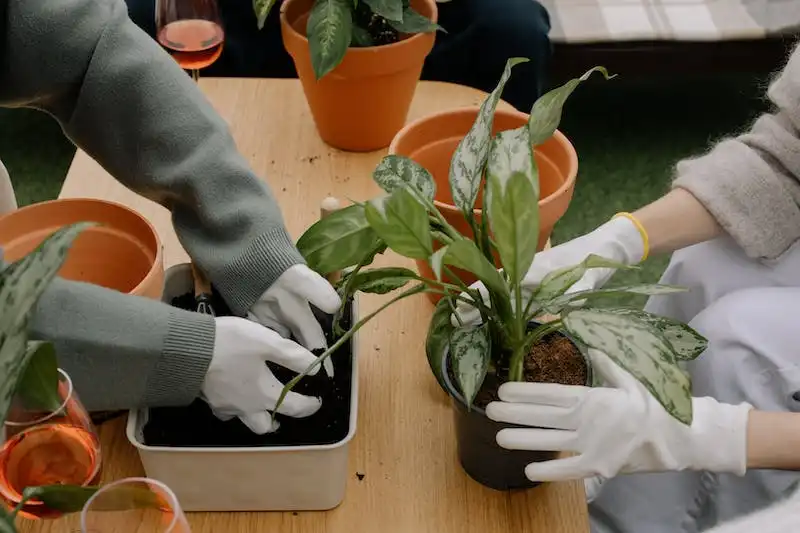The Philodendron is a popular houseplant that has gained a reputation for being easy to care for. It is a member of the Araceae family and is native to the neotropical regions of the Americas. With its vibrant green leaves and easy-going nature, it has become a staple in many indoor gardens.
One of the reasons why the Philodendron is so popular is because of its adaptability to different environments. It can thrive in both low light and bright light conditions, making it a versatile choice for any corner of your home. However, it’s important to note that the amount of light it receives will affect its growth. Philodendrons with higher light requirements will have more compacted and upward-growing stems, while those with lower light requirements may become more leggy and vining.
When it comes to watering, the Philodendron prefers to be kept slightly moist but not waterlogged. Overwatering can lead to root rot and other moisture-related issues. To determine if your Philodendron needs to be watered, check the top inch of soil – if it feels dry to the touch, it’s time to water. In general, watering once a week during the growing season (spring and summer) and reducing frequency in the winter months is a good schedule to follow, but always adjust based on your specific environment.
Fertilizer is also important for the health and growth of your Philodendron. You can apply a balanced, water-soluble fertilizer once a month during the growing season. This will provide the necessary nutrients for the plant to thrive. However, be careful not to over-fertilize, as this can lead to salt build-up in the soil.
If you’re hoping to propagate your Philodendron, there are a few methods you can try. One of the most common and easiest ways is through stem cuttings. Simply select a healthy stem, make a clean cut just below a node, and place it in a glass of water. Roots should start to develop within a few weeks. Another method is by division, where you carefully separate the plant into smaller sections, making sure each section has roots and leaves. Both of these methods have a high success rate and are great for expanding your Philodendron collection.
There are many different types of Philodendrons, each with their own unique characteristics and growth habits. Some popular varieties include the Philodendron prince of orange, which has vibrant orange leaves, and the Philodendron pink princess, which features dark green leaves with pink variegation. Whether you’re a beginner or a seasoned pro, there’s a Philodendron out there for everyone.
In conclusion, the Philodendron is a versatile and beautiful plant that is relatively easy to care for. By providing the right amount of light, water, and fertilizer, you can ensure that your Philodendron remains healthy and happy. Whether you choose to grow it indoors or in your garden, the Philodendron’s lush foliage and climbing nature will add a touch of tropical beauty to any space.
Thank you for reading this guide to growing and caring for Philodendrons. We hope you’ve learned some valuable tips and tricks to help your plants thrive!
Philodendron Philodendron spp
Philodendron is a genus of flowering plants in the family Araceae. They are native to the tropical regions of Central and South America. The name “philodendron” comes from the Greek words “philos” meaning love and “dendron” meaning tree, indicating their tendency to cling and climb trees in their natural environment.
Philodendron spp are popular houseplants because of their attractive foliage and easy care requirements.
There are many different species and varieties of philodendrons, each with its own unique growth habit and leaf shape. Some philodendrons have large, split leaves while others have more compact, vining growth. They can be propagated from stem cuttings or by air layering.
When growing philodendrons indoors, it’s important to provide the right conditions for healthy growth. Philodendrons prefer bright, indirect light but can tolerate lower light levels. They should be watered thoroughly and allowed to dry out slightly between waterings. Over-watering can lead to root rot, so it’s important to use well-draining potting soils. Philodendrons can also benefit from regular fertilization during the growing season, but should be fertilized less frequently in winter.
The temperature preference for philodendrons varies depending on the species. Some prefer warmer temperatures around 70-85°F (21-29°C), while others can tolerate cooler temperatures around 50-70°F (10-21°C).
Philodendron Birkin is one popular species known for its stunning white and green variegated leaves. Another popular species is the Philodendron Pink Princess, which has pink variegation on its leaves. Each philodendron species has its own unique growth rate and height, so it’s important to research and follow specific care instructions for your particular plant.
In summary, philodendron spp are versatile and easy-to-care-for houseplants that can add a touch of tropical beauty to any indoor environment. With the right lighting, watering schedule, and fertilizer, these plants can thrive and bring joy to any plant lover.
Philodendron
Philodendron is a genus of flowering plants in the family Araceae, native to the neotropical region of Central and South America. These plants are known for their attractive foliage and are popular as houseplants due to their relatively easy care requirements.
There are over 400 different types of philodendron, with varying leaf shapes, sizes, and colors. Some common types include the split-leaf philodendron, the climbing philodendron, and the heart-leaf philodendron.
Philodendron plants can grow to be quite large, with some reaching heights of several feet. They have trailing or climbing stems that can be trained to cling to a trellis or hang down from a pot. The leaves of a philodendron can vary in size, shape, and color, with some species having large, heart-shaped leaves and others having smaller, more elongated leaves.
Philodendrons are relatively low-maintenance plants. They prefer warm temperatures and bright, indirect lighting, but can tolerate lower light levels. They should be watered once every 1-2 weeks, allowing the top portion of soil to dry out before watering again. Overwatering should be avoided, as it can lead to root rot. These plants also benefit from regular fertilization, using a balanced liquid fertilizer once a month during the growing season.
Propagation of philodendrons can be done through stem or leaf cuttings. To propagate from stem cuttings, select a healthy stem with several nodes, and make a clean cut just below a node. Place the cutting in a glass of water and wait for roots to develop. Once roots have formed, the cutting can be potted in a well-draining soil mix.
Philodendrons can also be propagated by dividing mature plants. To do this, carefully separate the roots and stems of the plant into individual sections, making sure each section has several leaves and a healthy root system. These sections can then be potted in separate containers.
In summary, philodendrons are popular houseplants known for their attractive foliage. They require bright, indirect light, regular watering, and occasional fertilization. Propagation can be done through stem or leaf cuttings, or by dividing mature plants. With proper care and maintenance, philodendrons can thrive and add a touch of greenery to any indoor environment.
| Fact | Source |
|---|---|
| Philodendrons are native to the neotropical region of Central and South America. | Britannica |
| There are over 400 different types of philodendron. | Getty |
| Philodendrons prefer warm temperatures and bright, indirect lighting. | Meyers |
| Philodendrons can be propagated through stem or leaf cuttings, or by dividing mature plants. | Gardening.com |
Physical description
Philodendrons are a popular group of houseplants known for their lush foliage and easy-care nature. These tropical plants thrive in indoor environments, making them perfect for those who want to bring a touch of the jungle into their homes.
The leaves of philodendrons come in a variety of shapes, sizes, and colors, ranging from small heart-shaped leaves to large split leaves. Some species even have variegated leaves with white or pink spots. One of the most popular philodendron species is the Philodendron spp., which features large, glossy leaves that can grow up to three feet long.
Philodendrons are vining plants, meaning they will climb and trail if given the right support. They prefer bright, indirect light but can tolerate lower light conditions as well. If your philodendron starts to turn leggy or develop smaller leaves, it may be an indication that it needs more light. On the other hand, if the leaves start to develop brown spots or the tips turn yellow, it could be a sign that the plant is getting too much sunlight.
These plants prefer consistently moist soil, so it’s important to water them thoroughly whenever the top inch of soil feels dry. Be sure not to overwater, as this can lead to root rot and other health problems. During the winter months, when the plant’s growth slows down, you can reduce the frequency of watering.
Fertilizing your philodendron is also important for its overall health and growth. Apply a balanced liquid fertilizer once a month during the growing season (spring and summer), following the instructions on the label. Be sure to only fertilize when the plant is actively growing, as applying fertilizer during its dormant period can cause harm.
Philodendrons can be propagated through stem cuttings or by dividing a mature plant. Stem cuttings should be taken from the healthier portion of the plant, preferably with a node. Place the cutting in a fresh potting mix and keep it in a warm and humid environment. Within a few weeks, the cutting should develop roots and can then be potted separately.
In summary, philodendrons are beautiful and easy-to-care-for houseplants that can thrive in a variety of lighting conditions and environments. They feature a wide range of leaf shapes and colors, making them a classic choice for any indoor garden. By providing them with the right amount of water, light, and fertilizer, you can ensure that your philodendron will grow and thrive for years to come.




